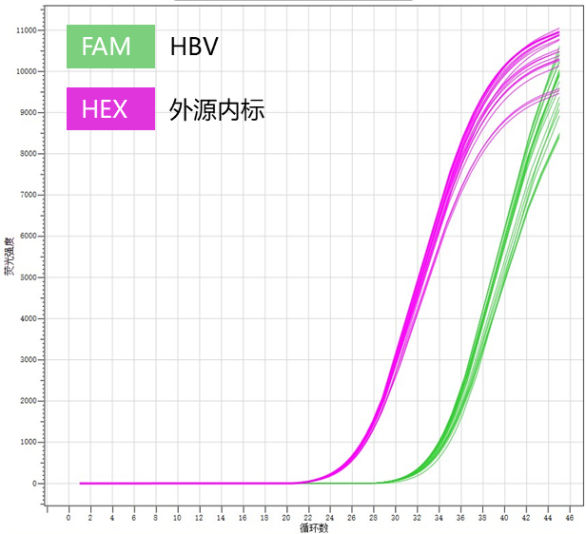Hepatitis B Virus is the pathogen that causes hepatitis B. Human infection is of the genus Orthohepadna virus. HBV has the characteristics of high viral replication yield and high mutation rate. HBV has been found to have at least 8 genotypes (A~H), each genotype can be divided into different subtypes, and there is recombination between genotypes, B Types , C and D are the main popular strains in China.
Quantitative determination of HBV-DNA can evaluate the viral load and replication activity in patients. It is currently the "gold standard" for evaluating HBV replication. It is a laboratory detection index to help diagnose recessive HBV infection and recessive chronic hepatitis B. effective indicator of development. Nucleic Acid Amplification Test (NAT) is sensitive to low levels of HBV virus in the body, and can detect low-load viruses, understand the concentration of viruses in the body, replication level, infectivity, drug treatment effect, formulate treatment strategies, etc., and use them as evaluation indicators , is also the only laboratory detection indicator that can help diagnose occult HBV infection and occult chronic HBV.
1.Sample Type: Serum, Plasma
2.High Accuracy: Effectively quantitatively the content of hepatitis B virus in the sample, and the result meets expectations.
3.Good Specificity: No cross reactivity has been observed by testing the positive specimens such as Human cytomegalovirus, Influenza A virus, EB virus, Human immunodeficiency virus, Hepatitis C virus, Herpes simplex virus I, Herpes simplex virus II, Staphylococcus aureus and Canidia Albicans.
4.Real-time Monitoring: The introduction of external and internal control is used to monitor the entire extraction and PCR detection process.
5.Simple Operation: The fully premixed reaction solution can be directly dispensed when used, and the tube is completely closed to complete the amplification and detection process, effectively preventing aerosol contamination.
Early Diagnosis
Disease Progression Monitoring
Prevention of Mother-to-Child Transmission
Blood Safety
Epidemiological Surveillance
Drug Resistance Testing
The low-concentration hepatitis B virus nucleic acid sample was tested repeatedly with this kit. The coefficient of variation of the Ct value was less than 2%, and the coefficient of variation of the logarithmic value of the quantitative concentration was less than 5%, indicating that the kit has good reproducibility. The test results are stable and reliable, and the test results are as follows:

Using the kit to detect hepatitis B virus and draw a standard curve, the correlation coefficient of the Ct value of the target gene in the unknown sample is above 0.995, indicating that the kit has a good linear relationship and high PCR efficiency. The result is shown in the figure as below:

1. The kit need to be transported under freezing conditions.
2. The kit should be stored at -25°C--15°C away from light, and avoid repeated freeze-thaw more than 5 times.
3. The kit can be stored for up to 12 months if all components are kept in the manner above. (Please use the kit inthe period of validity).
| Cat# | Product Name | Packing size |
| BSB01M1 | HBV PCR Fluorescence Ouantitative Detection Kit | 48 T |
| BSB01L1 | HBV PCR Fluorescence Ouantitative Detection Kit | 96 T |

